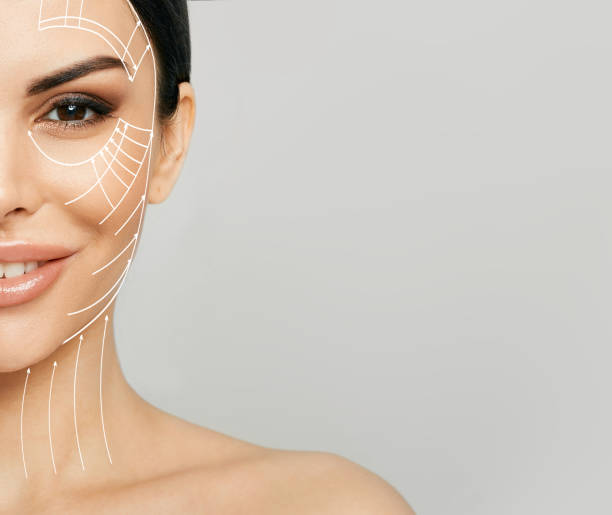Yes, body contouring procedures can leave scars, as they typically involve surgical incisions. The extent and visibility of these scars can vary depending on several factors, including the specific procedure performed, the surgeon’s technique, your body’s healing ability, and your skin type.
Common body contouring procedures like liposuction, tummy tucks (abdominoplasty), and body lifts typically involve incisions to remove excess fat and skin or to reshape and tighten the underlying tissues. These incisions are carefully placed to minimize visibility, often in areas that can be concealed by clothing or within natural body creases.
While plastic surgeons strive to make incisions as inconspicuous as possible, it’s important to understand that scars are a natural part of the healing process. Initially, scars may be red, raised, and more noticeable, but they tend to fade and become less noticeable over time. The degree of scarring varies from person to person.
To minimize the appearance of scars after body contouring procedures, you can take the following steps:
- Follow your surgeon’s post-operative care instructions carefully, including wound care and scar management.
- Avoid direct sunlight and use sunblock on scars to prevent them from darkening.
- Keep scars moisturized to promote healing.
- Massaging the scars with vitamin E oil or a scar-reducing cream may help.
- Be patient, as it can take several months to over a year for scars to fully mature and become less noticeable.
If you are concerned about scarring from body contouring procedures, discuss your concerns with a board-certified plastic surgeon during your consultation. They can provide you with more specific information about the likely scarring associated with your chosen procedure and any steps you can take to minimize it.

What are the risks of body contouring?
Body contouring procedures, whether surgical or nonsurgical, carry certain risks and potential complications, as is the case with any medical or surgical intervention. It’s essential to thoroughly discuss these risks with your surgeon and make an informed decision. The specific risks can vary depending on the type of body contouring procedure you undergo, but some common risks and complications include:
- Infection: Any surgical procedure carries a risk of infection. Surgeons take precautions to minimize this risk, but it can still occur.
- Scarring: As mentioned in the previous response, body contouring surgeries often involve incisions, which can lead to scarring. The extent and visibility of scars can vary.
- Bruising and Swelling: Temporary bruising and swelling are common after many body contouring procedures. It usually subsides over time but can be uncomfortable in the short term.
- Pain and Discomfort: Post-operative pain and discomfort are typical and can vary in intensity depending on the procedure. Your surgeon will prescribe pain medications or recommend pain management strategies.
- Bleeding and Hematoma: Excessive bleeding during surgery or the formation of a hematoma (a collection of blood under the skin) can occur but is relatively rare.
- Nerve Damage: There is a risk of damage to sensory or motor nerves, which can lead to numbness, tingling, or weakness in the treated area. This is usually temporary but can sometimes be permanent.
- Seroma: The accumulation of fluid in the surgical site, known as a seroma, can occur. It may require drainage to resolve.
- Skin Irregularities: In some cases, body contouring procedures can result in uneven or irregular skin surfaces, which may require additional corrective surgery.
- Allergic Reactions: In rare cases, individuals may have allergic reactions to surgical materials, such as sutures or anesthesia.
- Deep Vein Thrombosis (DVT) and Pulmonary Embolism: These serious complications involve blood clot formation, which can occur after surgery, especially if you remain sedentary for extended periods during recovery. DVT can potentially lead to a pulmonary embolism if a blood clot travels to the lungs.
- Unsatisfactory Results: While surgeons aim to provide satisfying outcomes, individual results may not meet expectations, leading to dissatisfaction with the cosmetic outcome.
- Anesthesia Risks: General anesthesia, which is often used in surgical body contouring procedures, carries its own set of risks, including adverse reactions and complications.
To minimize the risks associated with body contouring, it’s crucial to choose a board-certified plastic surgeon with extensive experience in the specific procedure you’re considering. Additionally, closely following your surgeon’s pre-operative and post-operative instructions can significantly reduce the likelihood of complications and promote a smoother recovery. Always discuss your concerns and expectations with your surgeon to ensure a comprehensive understanding of the potential risks and benefits of the procedure.
How painful is body contouring?
The level of pain experienced during and after a body contouring procedure can vary widely based on several factors, including the type of procedure, individual pain tolerance, and the surgical technique used. Some people may experience very little discomfort, while others may have a more painful recovery. Here’s a general overview of what you might expect:
- During the Procedure: Body contouring procedures are typically performed under anesthesia, which means you should not feel pain during the surgery itself. Anesthesia ensures that you are unconscious or numb in the treated areas.
- Immediately After the Procedure: You may wake up from anesthesia feeling groggy, but you should not experience pain at this stage. Surgical sites are often numb immediately after surgery, thanks to the local anesthesia and residual effects of general anesthesia.
- Post-Operative Pain: Pain and discomfort typically become more noticeable in the hours or days following surgery as the anesthesia wears off. The level of pain can vary from mild to moderate, depending on factors like the extent of the procedure, the individual’s pain threshold, and the surgical technique. Common sensations include soreness, aching, and tightness in the treated area.
- Pain Management: Surgeons will typically prescribe pain medications to help manage discomfort during the initial recovery period. Over-the-counter pain relievers may be recommended as well.
- Duration of Pain: The duration of post-operative pain also varies. Some people may experience discomfort for a few days to a couple of weeks, while others may have ongoing discomfort for a longer period.
- Pain Reduction Over Time: As your body heals, you can expect a gradual reduction in pain and discomfort. It’s essential to follow your surgeon’s post-operative care instructions, including medication use, rest, and activity restrictions, to support a smoother and less painful recovery.
- Nonsurgical Options: Some body contouring procedures, such as nonsurgical fat reduction treatments like CoolSculpting, generally involve minimal discomfort during and after the procedure. However, they may require multiple sessions to achieve desired results.
It’s important to discuss pain management with your surgeon before undergoing any body contouring procedure. They can provide you with a clear understanding of what to expect in terms of pain and how it will be managed. Your surgeon can adjust pain medications as needed to ensure your comfort during the recovery process.
Remember that while discomfort and pain are a natural part of the healing process, if you experience severe or worsening pain, unusual symptoms, or signs of infection, it’s crucial to contact your surgeon promptly, as these may indicate complications that require attention.
What is the disadvantage of body sculpting?
Body sculpting, whether achieved through surgical procedures like liposuction or non-surgical methods like CoolSculpting, can offer many benefits, but it also has some potential disadvantages and limitations. These disadvantages can vary depending on the specific method used and individual factors. Here are some disadvantages and considerations associated with body sculpting:
- Limited Weight Loss: Body sculpting is not a weight loss solution. It is designed to target localized fat deposits and improve body contours. If you have a significant amount of weight to lose, body sculpting alone may not provide the desired results.
- Scarring: Surgical body sculpting procedures typically involve incisions, which can lead to scars. While surgeons try to minimize scarring, it is a potential downside, and the extent and visibility of scars can vary.
- Risk of Complications: All surgical procedures carry some risk of complications, such as infection, bleeding, and anesthesia-related issues. Non-surgical procedures also have potential risks, including skin damage or uneven results.
- Downtime and Recovery: Both surgical and non-surgical body sculpting procedures often require some downtime for recovery. You may need to take time off work and limit physical activities during the initial healing period.
- Cost: Body sculpting procedures can be expensive, especially surgical ones. The cost can vary depending on the specific procedure, the surgeon’s experience, and your location. Non-surgical treatments may require multiple sessions, which can also add up.
- Bruising and Swelling: Bruising and swelling are common side effects of many body sculpting procedures. These temporary effects can be uncomfortable and may take some time to resolve.
- Temporary Results: The results of some body sculpting procedures, especially non-surgical ones, may be temporary. Maintaining the results often requires a healthy lifestyle, including diet and exercise.
- Not Suitable for Everyone: Body sculpting procedures may not be suitable for individuals with certain medical conditions, such as uncontrolled diabetes, heart disease, or clotting disorders. It’s essential to undergo a thorough medical evaluation before proceeding.
- Possible Need for Additional Procedures: In some cases, achieving the desired results may require multiple procedures or touch-up treatments, which can increase the overall cost and time commitment.
- Realistic Expectations: It’s important to have realistic expectations about what body sculpting can achieve. While it can enhance your body’s appearance, it may not provide perfection or entirely eliminate all imperfections.
- Risk of Nerve Damage: In some cases, body sculpting procedures can lead to temporary or, rarely, permanent nerve damage, which can result in numbness or altered sensation in the treated area.
Before pursuing any body sculpting procedure, it’s crucial to consult with a board-certified plastic surgeon or a qualified medical professional. They can assess your individual needs, discuss the potential disadvantages and advantages, and help you make an informed decision about the most suitable approach to achieve your aesthetic goals. Additionally, maintaining a healthy lifestyle with diet and exercise is essential for long-term results, regardless of the method used.
